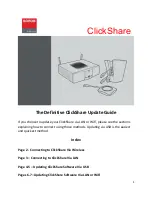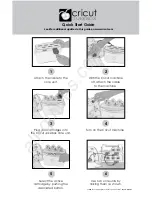
Specifications
30
Manta Technical Manual V7.7.0
“burst mode” frame rate are able to output more data than the maximum available
bandwidth (124 Mbit/s), and will see a frame rate increase with a reduction in
width.
Sensor tap mode
With dual-tap sensor mode you can achieve a higher frame rate than with one-tap
mode. With one-tap sensor mode, you can achieve an image certain to be free of
any tap-boundary artifacts. You can also use one-tap mode if you experience tap
imbalance issues with your camera. You can change the sensor digitization tap
mode in Vimba Viewer 2.0 or later. Applicable to dual-tap cameras as detailed in
the specification tables.
Affected features
This table lists features which are affected when switching from dual-tap to one-
tap sensor mode.
Resolution and ROI measurements
•
Data was generated using
StreamBytesPerSecond
= 124 Mbit/s (full
bandwidth) and an 8-bit pixel format. Frame rate may be lower if using
network hardware incapable of 124 Mbit/s.
•
For maximum speed advantage on quad-tap CCD sensors, ROIs are center
image, where feature
OffsetY
= (full sensor height – ROI height)/2.
•
There is no frame rate increase with reduced width unless otherwise noted.
•
BinningVertical
is vertical row summing on CCD before readout. The
frame rate for an ROI at the same effective height as binning will be slower
because the CCD still needs to read out the “fast readout rows” in ROI mode.
Frame rate for CCD sensors
The frame rate is a theoretical maximum frame rate (frames per second) of the
CCD sensor according to the given formula.
Frame rate and readout
Although the sensor is capable of higher frame rates, readout is limited by GigE
bandwidth and exposure value. You can improve frame rates with a reduced
region of interest and shorter exposure values.
Image acquisition must be stopped before changing sensor tap mode.
Feature
Dual-tap mode
One-tap mode
ReverseX
Available
Not available
ReverseY
Available
Not available
















































